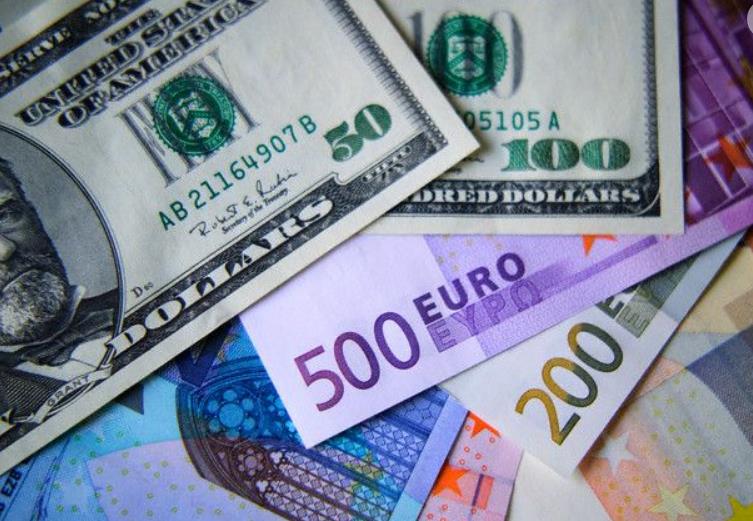The euro climbed to its highest level since June 2022 on Friday, as bets for smaller Fed rate hikes continued to undermine the US dollar. The EUR/USD pair rose for the seventh consecutive day and was trading near 1.1235 at the time of writing.
The US dollar has been under pressure since the Federal Reserve signaled last week that it will likely raise interest rates by 50 basis points in December, instead of the 75 basis points that the market had expected. The Fed also lowered its projections for the peak policy rate and the pace of tightening in the next few years, citing the risks posed by the omicron variant of the coronavirus and the transitory nature of inflation.

The Fed’s dovish stance contrasted with the hawkish tone of some other major central banks, such as the Bank of England and the European Central Bank, which have already started or are expected to start raising interest rates soon. This has widened the interest rate differential between the US and its peers, making the dollar less attractive for investors seeking higher returns.
The dollar’s weakness was exacerbated by the disappointing US inflation data released on Thursday, which showed that the consumer price index (CPI) rose by 6.2% year-on-year in November, unchanged from the previous month and below the consensus estimate of 6.3%. The core CPI, which excludes food and energy, also missed expectations, rising by 4.9% year-on-year, down from 4.6% in October.
The soft inflation figures suggested that the Fed’s view that inflation is transitory may be correct, and that the central bank may not need to tighten its policy more aggressively than anticipated. This reduced the market’s expectations for future Fed rate hikes, as reflected by the lower US Treasury bond yields and the weaker US dollar index, which fell to a five-month low of 100.80 on Friday.
Eurozone data supports euro strength
The euro, on the other hand, has been supported by the upbeat economic data from the Eurozone, which indicated that the region’s recovery is gaining momentum despite the omicron threat. The Eurozone industrial production rose by 1.5% month-on-month in October, beating the forecast of 1.0% and the previous reading of 0.7%. The annual growth rate also improved to 2.0%, surpassing the estimate of 1.5% and the prior figure of 0.9%.
The Eurozone services PMI for November, which was released on Friday, also came in better than expected, rising to 56.4 from the flash estimate of 55.8 and the October reading of 56.1. The composite PMI, which combines the services and manufacturing sectors, also increased to 55.5 from the preliminary print of 55.1 and the previous month’s 55.2. The PMI surveys showed that the Eurozone’s private sector activity expanded at a faster pace in November, despite the supply chain disruptions and the labor shortages.
The positive data reinforced the market’s expectations that the European Central Bank (ECB) will soon announce the tapering of its pandemic emergency purchase program (PEPP), which is scheduled to end in March 2022. The ECB is widely expected to reduce its monthly bond purchases from 80 billion euros to 60 billion euros at its next policy meeting on December 16, and to end the PEPP by March. The ECB is also expected to raise its deposit rate, which is currently at -0.5%, by 10 basis points in June 2022, and to hike its main refinancing rate, which is at zero, by 15 basis points in December 2022.
The prospect of a tighter monetary policy from the ECB has boosted the euro’s appeal, especially against the dollar, which is facing a more dovish Fed. The EUR/USD pair has risen by more than 3% since the Fed’s policy meeting on December 8, and has broken above the key resistance level of 1.12, which coincides with the 200-day simple moving average (SMA). The pair is now eyeing the next resistance level of 1.13, which was last seen in May 2022.
US retail sales and consumer sentiment in focus
The EUR/USD pair may face some volatility later on Friday, as the US will release its retail sales data for November and the Michigan consumer sentiment index for December. The retail sales data will provide a glimpse into the US consumer spending, which is the main driver of the US economy. The consensus forecast is for a 0.8% month-on-month increase in the headline retail sales, and a 0.2% rise in the core retail sales, which exclude autos. A stronger-than-expected retail sales report may lend some support to the dollar, as it would signal a robust economic activity and a higher inflation pressure.
The consumer sentiment index, on the other hand, will reflect the US consumer confidence, which is influenced by the inflation outlook, the labor market conditions, and the omicron situation. The market expects the index to improve slightly to 67.5 in December, from 66.8 in November, which was the lowest level since 2011. A higher-than-expected consumer sentiment index may also boost the dollar, as it would indicate a more optimistic consumer outlook and a higher propensity to spend.
However, the impact of the US data may be limited, as the market’s attention is mainly focused on the Fed’s policy outlook and the omicron developments. The EUR/USD pair is likely to remain in an uptrend, as long as the Fed maintains its dovish stance and the ECB confirms its hawkish bias. The pair may also benefit from the hopes for the easing of the COVID-19 restrictions in China, which is the Eurozone’s largest trading partner. The pair may face some resistance at 1.13, but a break above that level may open the door for further gains towards 1.14 and 1.15.
